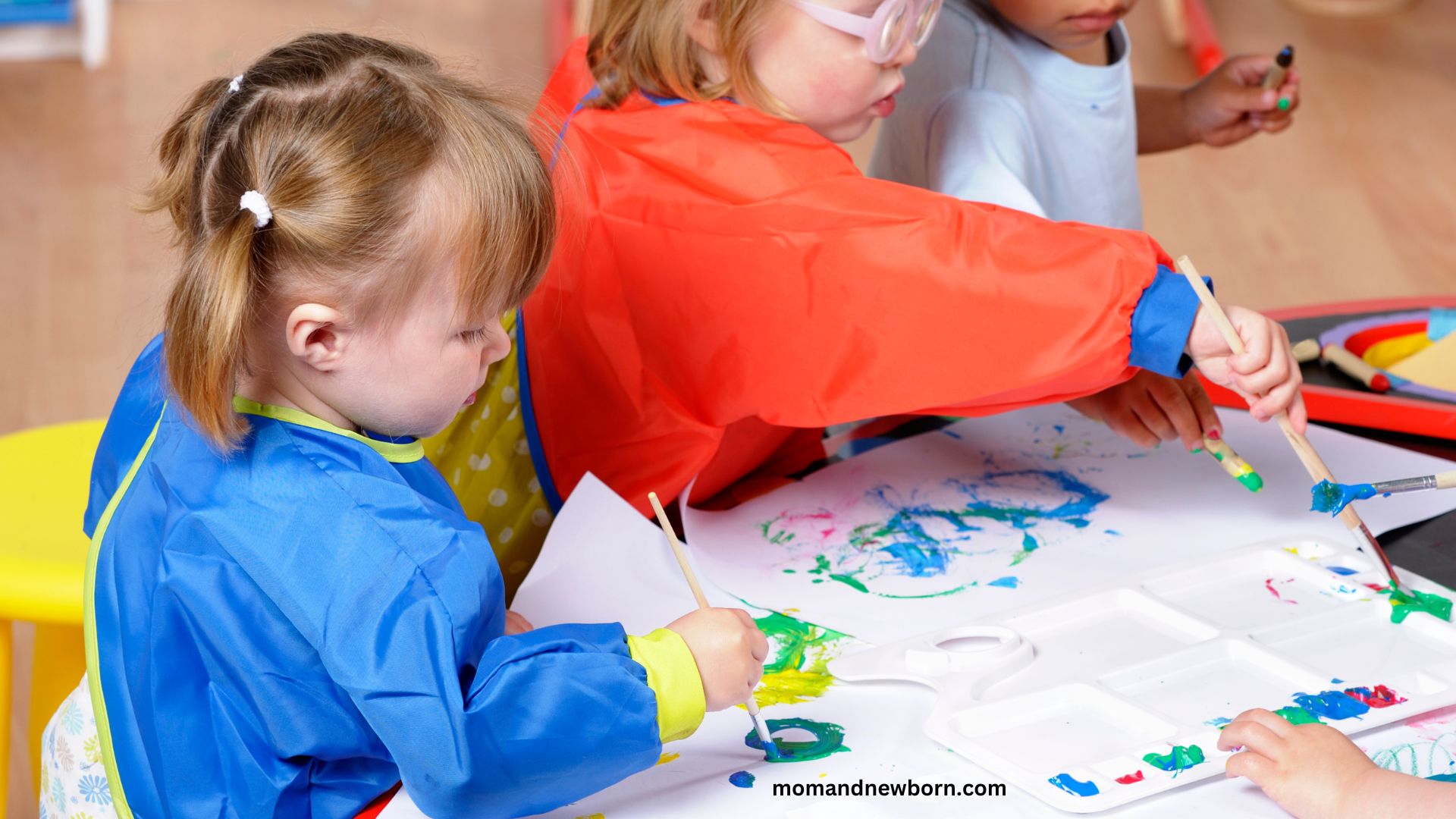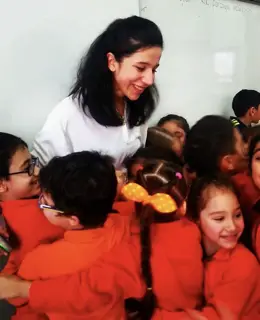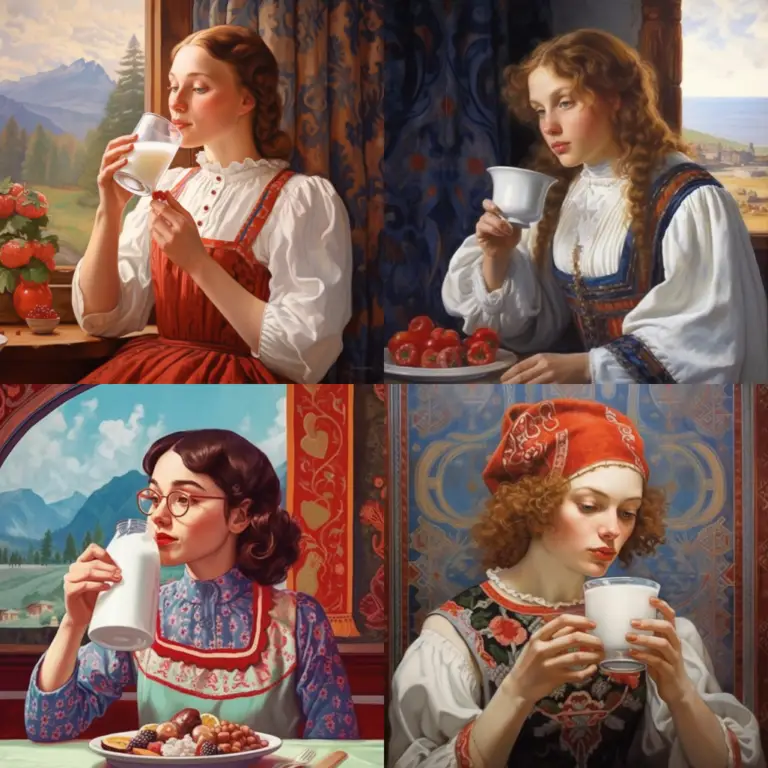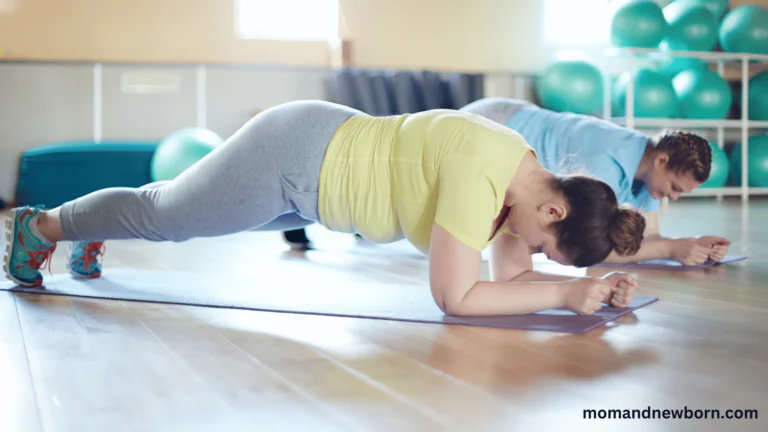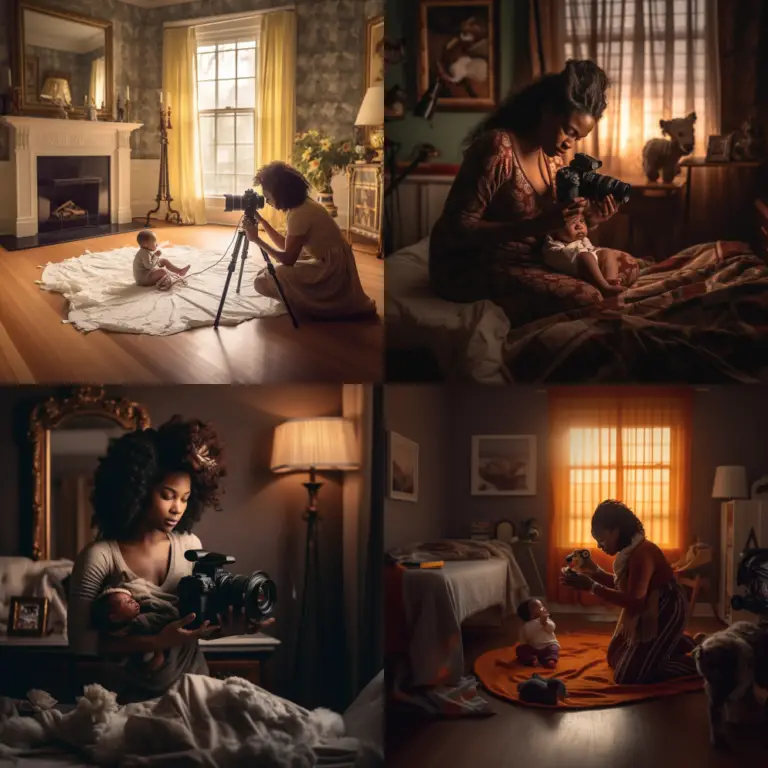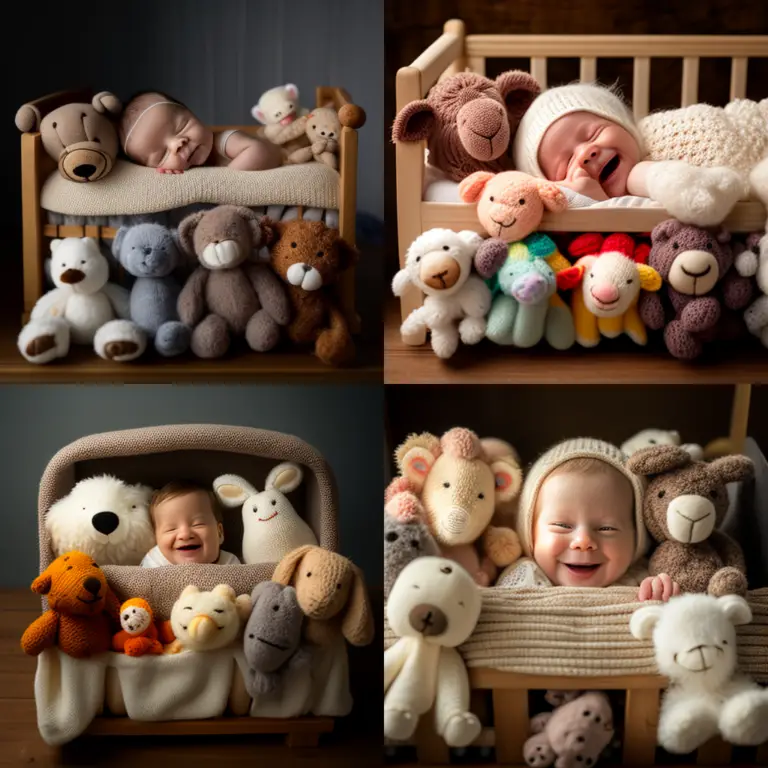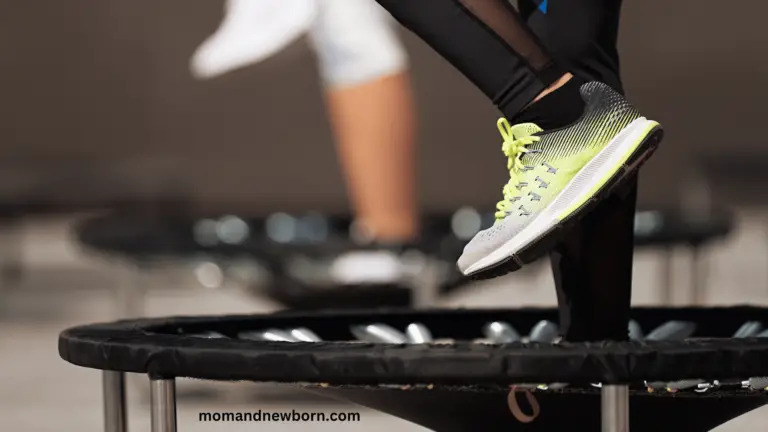Painting with Toddlers: Fostering Creativity and Development Through Art
Toddlers are constantly exploring and learning about the world around them. One fun and creative way to encourage their development is through painting. Painting is a fun activity for young children and can also help enhance their cognitive, emotional, and social skills.
In this article, we will explore the benefits of painting for toddlers and provide tips on making the most of this fun and creative activity. At momandnewborn.com, we are committed to helping parents support their child’s development, and we believe that painting is a great way to do just that.
What do babies learn from painting?
Painting can benefit babies beyond just creating a beautiful piece of art.
- Fine motor skills: Painting with a brush or fingers can help babies improve their hand-eye coordination and their grip and control of the meeting or other painting tools.
- Colors: Painting can help babies learn about different colors and how they mix to create new ones.
- Creativity: Painting allows babies to express themselves uniquely, encouraging creativity and imagination.
- Cause and effect: Babies can learn about cause and effect through painting, such as how pressing harder with a brush creates a thicker line or how mixing specific colors makes a new color.
- Spatial awareness: Painting helps babies develop spatial awareness by learning to control the brush or paint with their fingers on a flat surface.
- Language development: As babies paint, parents or caregivers can talk to them about what they are doing, helping to build their vocabulary and language skills.
- Emotional development: Painting can be a calming and relaxing activity for babies and can help them process and express their emotions safely and creatively. (1)
At what age can you start painting with a toddler?
Toddlers can start exploring and experimenting with painting as early as 18 months to 2 years old. At this age, they are developing their fine motor skills and hand-eye coordination, and painting can be a great way to support this development.
Finger painting, brushes or sponges, or even stamping with different shapes can be great ways to get toddlers started with painting. It’s also important to supervise them closely and make sure that they don’t put the paint or any other materials in their mouths.
It’s essential to make sure you choose non-toxic, washable paint that is safe for young children, as they will likely get it all over themselves and everything else in the vicinity.
How do I introduce my toddler to paintings?
Here are some tips for introducing paintings to toddlers:
- Start with familiar subjects: Look for paintings that feature everyday objects or animals, such as flowers, animals, or landscapes. This will help your toddler connect with the painting and hold their attention.
- Use simple language: When describing the painting to your toddler, use simple and descriptive language. Avoid using complex art terms that might confuse them.
- Encourage exploration: Encourage your toddler to explore the painting with their eyes and hands. You can point out different colors or shapes and have them touch the canvas or frame.
- Keep it short: Toddlers have short attention spans, so keep your art appreciation time short and sweet. Start with just a few paintings at a time and gradually build up.
- Make it a game: You can make looking at paintings fun by asking your toddler to find different objects or colors in the painting.
- Incorporate art into everyday life: You can also incorporate paintings and art into your daily routine. Hang colorful prints or posters on your walls, read books featuring artwork, or encourage your toddler to make their own art.
How do I encourage my toddler to paint?
Encouraging your toddler to paint can be a great way to foster their creativity and self-expression.
- Provide a space and materials: Set up a designated area for painting that is easy to access and comfortable for your toddler to work in. Provide them with a child-sized easel or table, washable paints, brushes, and paper.
- Make it fun: Encourage your toddler to experiment with colors and textures, and don’t worry about the mess. Turn on music or sing songs together to make the experience more enjoyable.
- Offer guidance: Provide gentle advice as needed, but allow your toddler to explore and create independently. You can suggest different techniques or ask open-ended questions to help them think creatively.
- Display their work: Display your toddler’s artwork in a prominent place, such as on the refrigerator or in a frame. This will show your toddler that their work is valued and encourage them to keep creating.
- Be patient and supportive: Remember that your toddler is still developing their fine motor skills and may not be able to create complex artwork yet. Be patient and supportive, and focus on the process of creating rather than the end result.
- By providing a space and materials, making the experience fun, offering guidance, displaying their work, and being patient and supportive, you can encourage your toddler to explore their creativity through painting.
What colors do toddlers prefer?
Toddlers may have different color preferences based on their personalities and experiences, but research suggests that they prefer bright, bold colors. This is because bright colors are visually stimulating and can capture a toddler’s attention.
Some of the most popular colors for toddlers include:
- Red: This color is often associated with energy and excitement and can be very eye-catching for toddlers.
- Blue: Blue is a calming color that can promote relaxation and tranquility, making it a popular choice for toddler bedrooms or playrooms.
- Yellow: Yellow is a cheerful and sunny color that can bring a sense of warmth and happiness to a toddler’s environment.
- Green: Green is a natural and soothing color that can promote feelings of harmony and balance.
- Purple: Purple is a color often associated with creativity and imagination and can be an appealing choice for toddlers who love to explore and experiment.
What should 2-year-old art look like?
At the age of 2, children are still developing their fine motor skills and hand-eye coordination, so their artwork is likely to be simple and abstract. Here are some common characteristics of 2-year-old art:
- Scribbles: Toddlers often enjoy making large, looping scribbles with crayons or markers. These scribbles may not have any specific shape or form, but they allow the child to experiment with different hand movements.
- Bold colors: Toddlers prefer bright, bold colors and may use various colors in their artwork.
- Simple shapes: Toddlers may begin to experiment with basic shapes such as circles, squares, and triangles, but their drawings are likely to be simple and abstract.
- Random placement: At this age, children may place their marks and colors randomly on the paper without any specific intention or plan.
- Finger painting: Toddlers may enjoy using their fingers to paint, creating large, colorful smears and swirls.
6 Toddler Painting Ideas to Inspire Creativity and Develop Fine Motor Skills
Finger painting
Toddlers often enjoy the tactile experience of finger painting. Provide your child with washable paint and a large piece of paper, and encourage them to create whatever they like using their fingers.
Bubble wrap painting
Dip a piece of bubble wrap in paint and use it to make prints on a piece of paper. This creates a fun and textured effect that toddlers may enjoy.
Sponge painting
Cut sponges into different shapes, let your toddler dip them in paint, and stamp them onto a piece of paper to create colorful patterns.
Nature painting
Take your toddler outside and collect leaves, twigs, and flowers. Use these natural objects as paintbrushes to create unique and exciting designs.
Watercolor painting
Watercolors are a great way to introduce your toddler to different color blending techniques. Provide your child with watercolor paints, a brush, and a cup of water, and let them experiment with mixing colors and painting on paper.
Handprint art
Encourage your child to dip their hand in paint and make handprints on paper. You can also use handprints to create animals or other fun designs.
You may also be interested:
- Colorful and Safe: The Best Non-Toxic Painting Toys for Toddlers
- Healthy Play, Happy Baby: BPA Free and Non-Toxic Toys for Toddlers
- Fun & Educational Musical Toys for Babies & Toddlers
References: Gavron T, Mayseless O. Creating Art Together as a Transformative Process in Parent-Child Relations: The Therapeutic Aspects of the Joint Painting Procedure. Front Psychol. 2018 Nov 13;9:2154. doi: 10.3389/fpsyg.2018.02154. PMID: 30483180; PMCID: PMC6243114.
Should 2.5-year-old know colors?
At 2.5 years old, most children have started to learn and recognize primary colors such as red, blue, yellow, and green. However, every child is different and may learn at their own pace. Some children may show interest in colors earlier, while others may take longer to understand and recognize them.
What is the best paint for toddlers?
When selecting paints for toddlers, choosing safe, non-toxic, and washable options is essential. Here are some types of paint that are generally safe and suitable for toddlers:
- Tempera paint: Tempera paint is a water-based paint that is washable in various colors. It dries quickly and is easy to clean up with soap and water.
- Finger paint: Finger paint is a type of tempera paint designed for use with fingers. It is safe for toddlers and can be a fun sensory experience.
- Washable watercolors: Washable watercolors are a great option for toddlers as they are non-toxic, easy to clean up, and fun to explore color mixing.
- Crayola washable paint: Crayola washable paint is designed for young children and is non-toxic, washable, and comes in various colors.
It’s important to supervise your toddler during painting activities and ensure they are not ingesting or inhaling the paint. You can also protect your surfaces and clothing using smocks, aprons, or old clothing. Overall, selecting safe and washable colors can ensure a fun and secure painting experience for your toddler.

